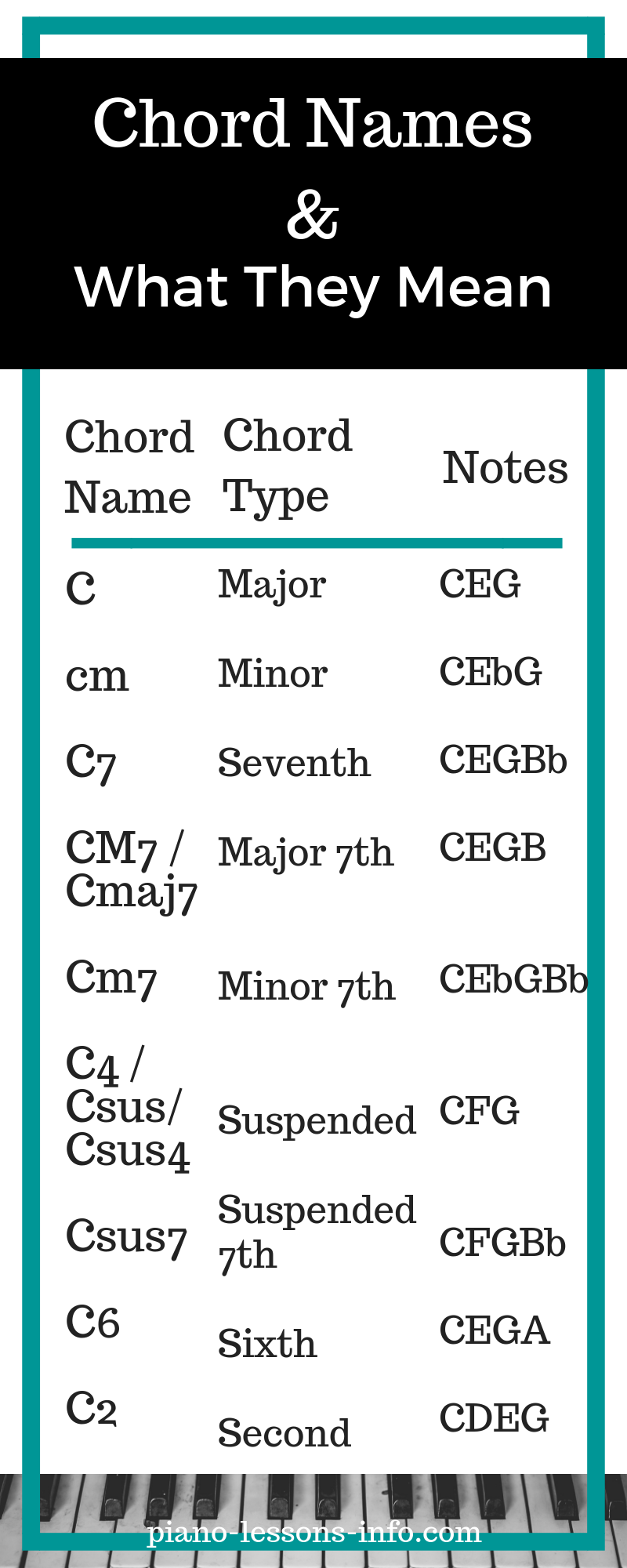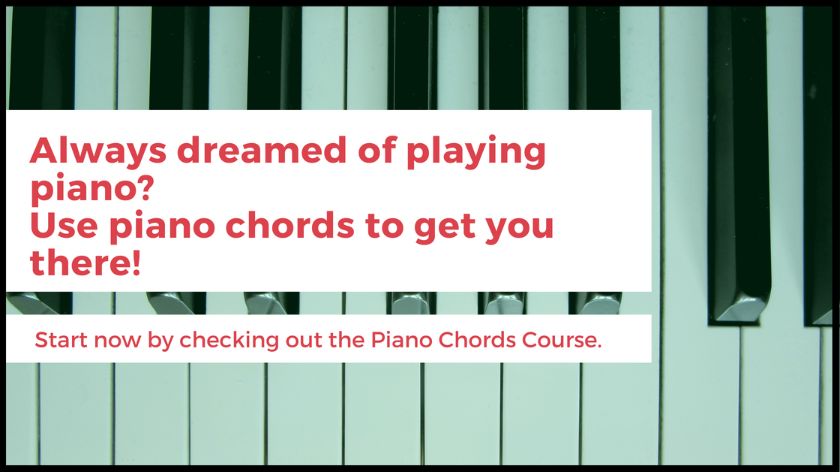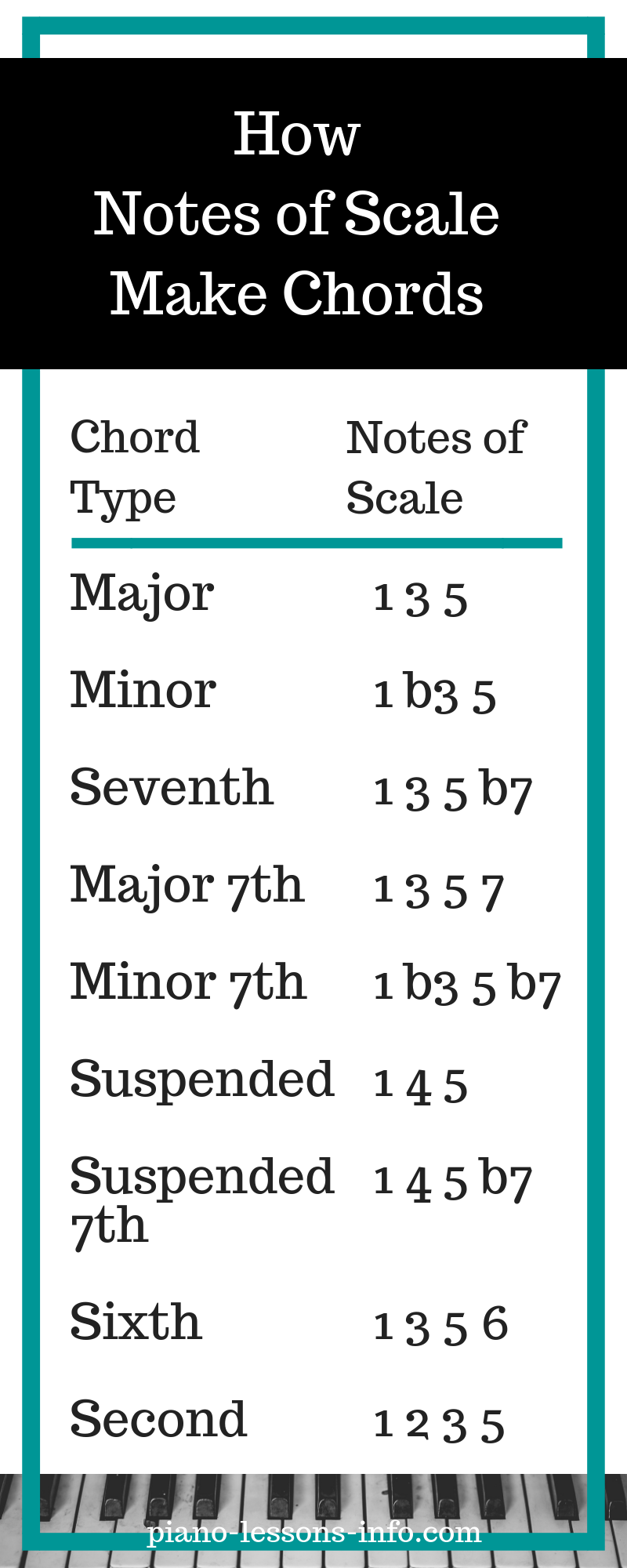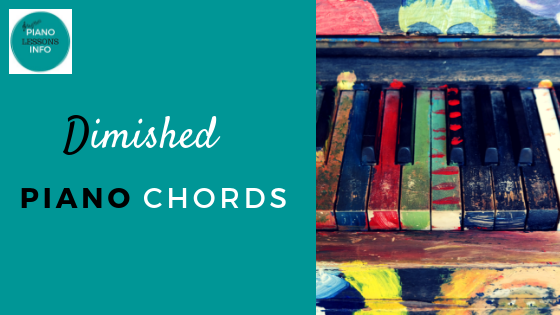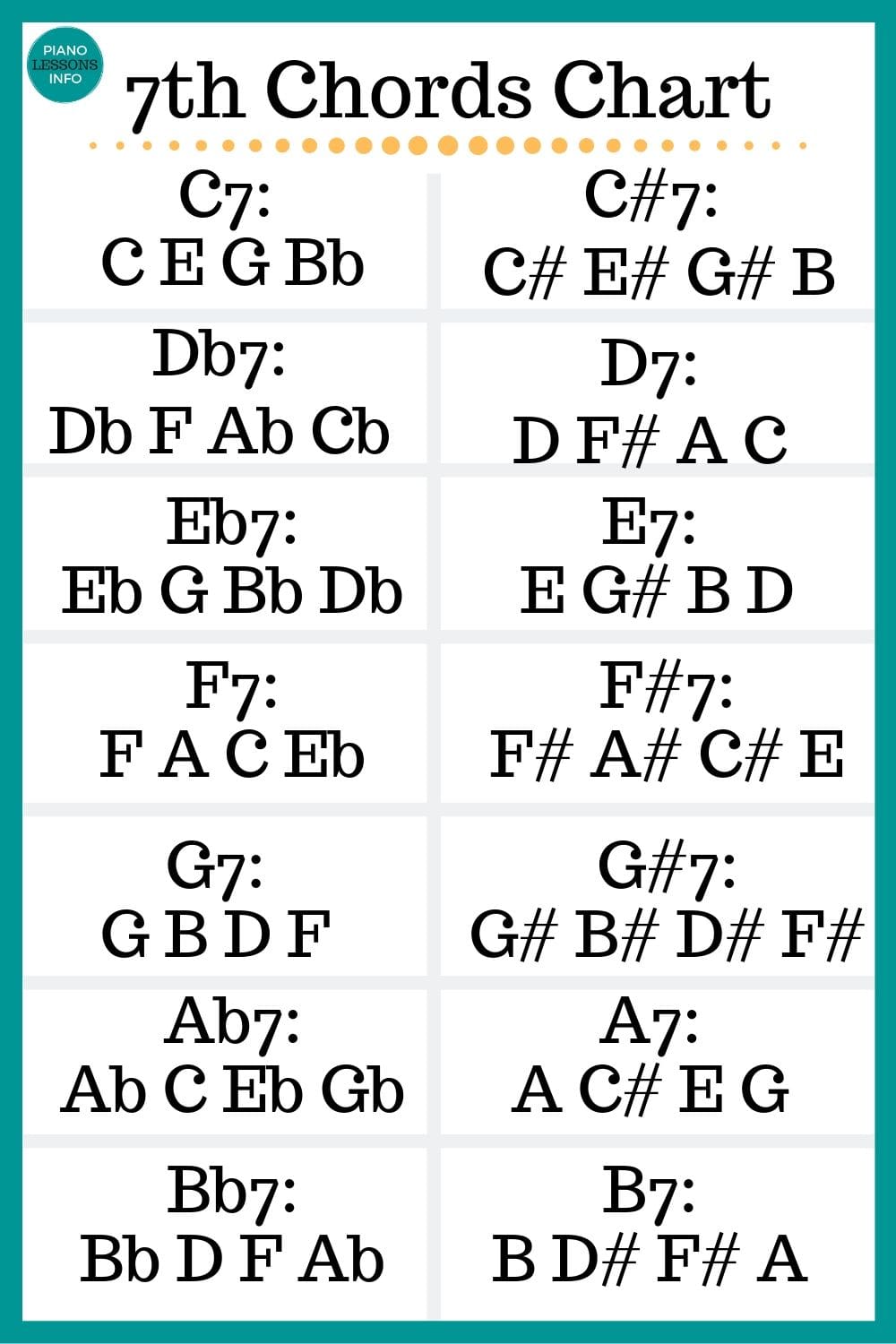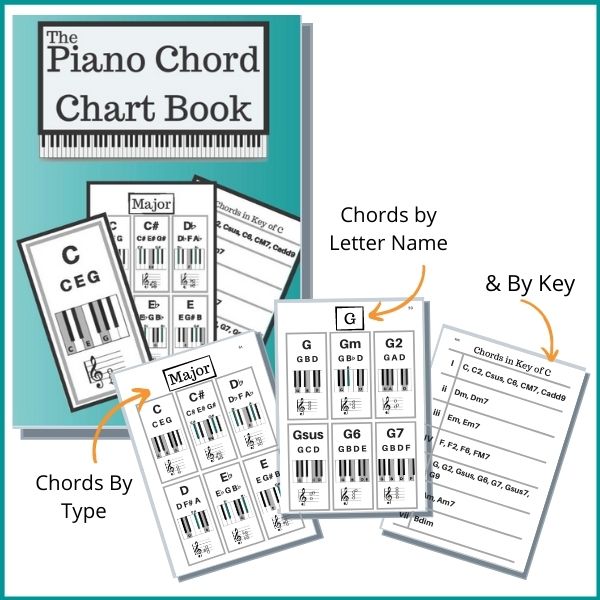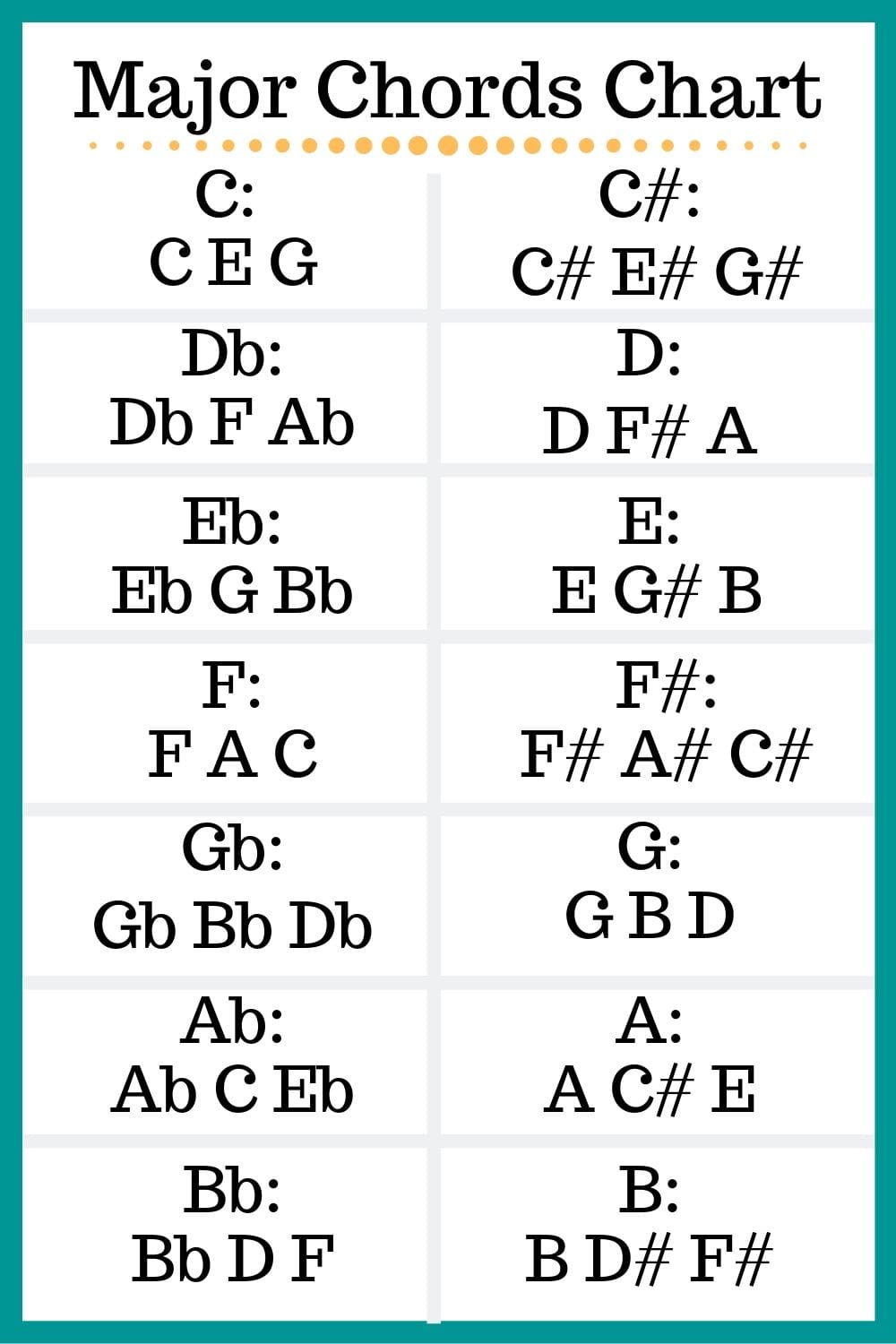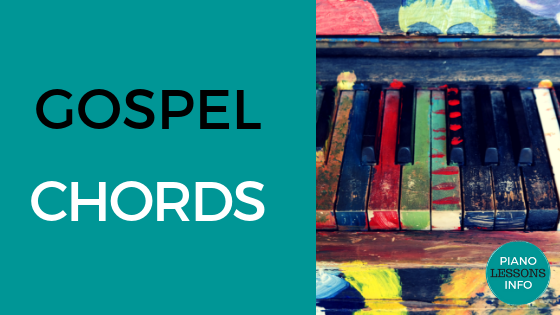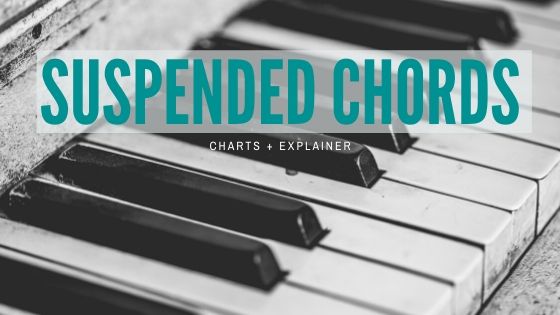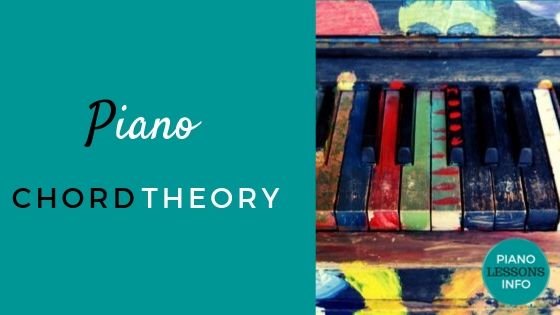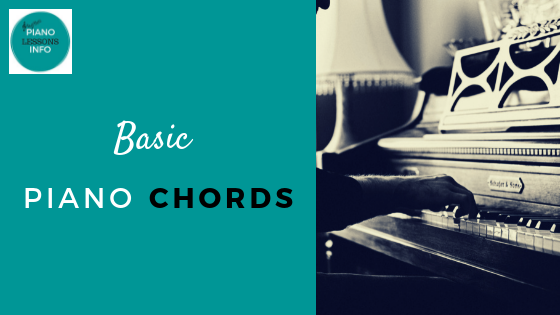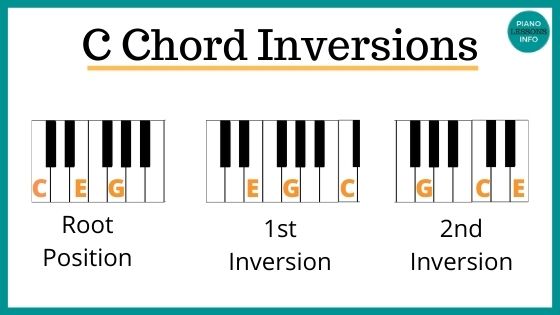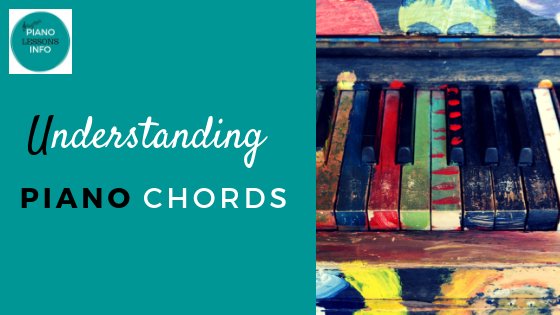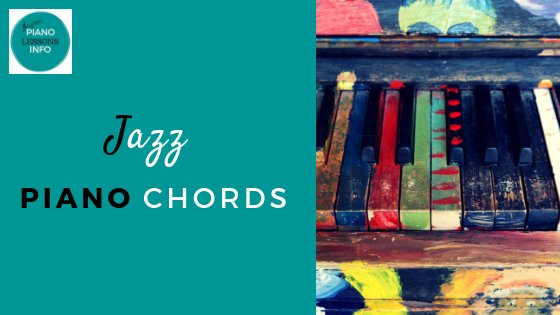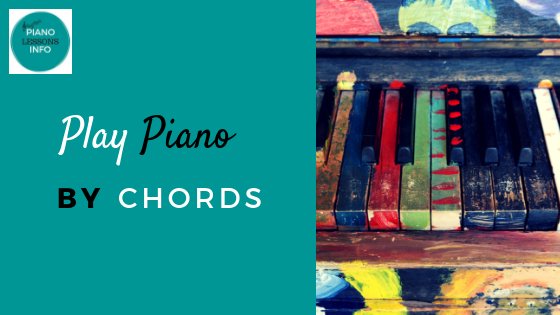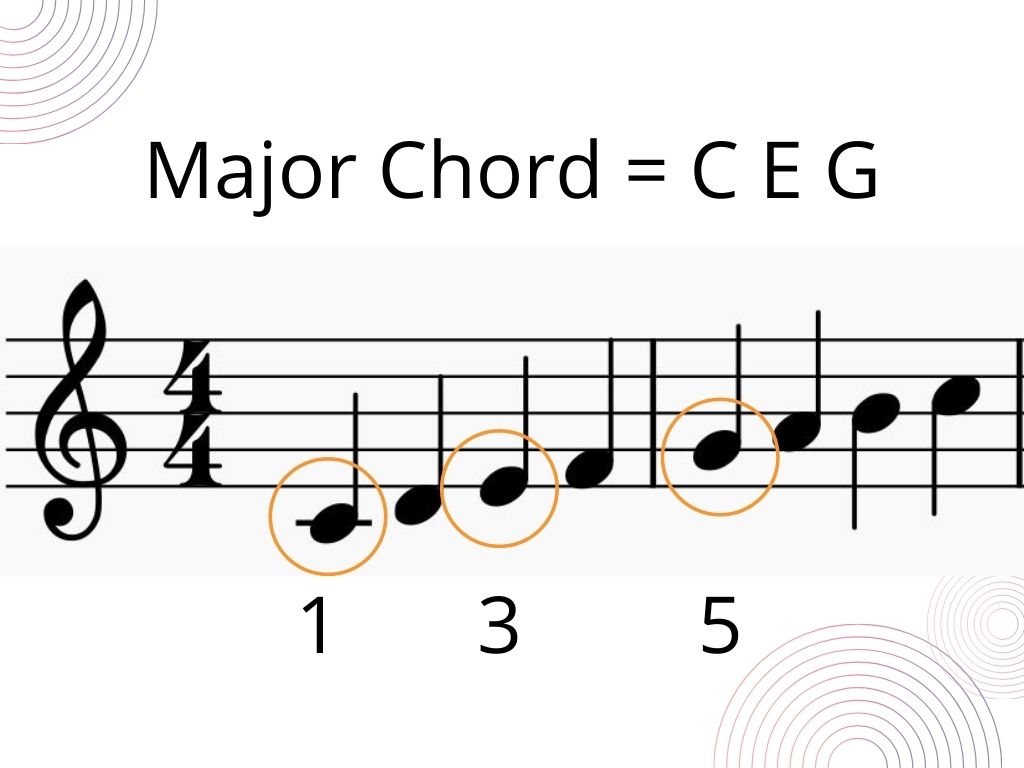How Do You Read Piano Chords?
In order to be able to read piano chords, you need to know what the symbols mean. First though, if you're not sure what piano chords are, read what are piano chords.
If you know what chords are but need to understand them a bit better before learning about the symbols, read understanding piano chords and then come back to this page.
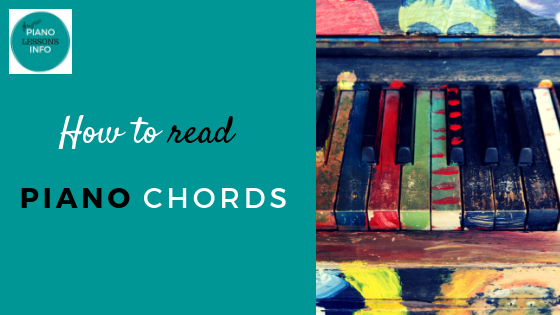
Piano chords are made up of symbols that stand for 3 or more notes. So, to read piano chords, you just need to know the symbols and what notes they stand for.
Most of the time the symbols are written the same way but some can be written differently depending on who’s doing the writing.
Here’s a list of what the chords are called. We’ll use the key of C. (These are the most common chords you’ll come across).
Put another way:
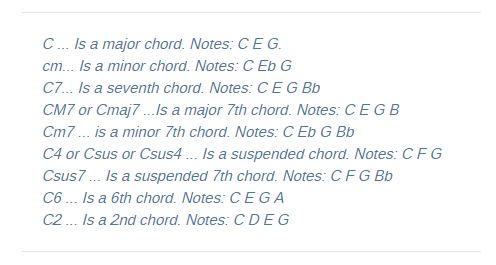
Video Lesson on How To Read Piano Chords
Now, skip over this next part if you don’t know anything about key signatures. (Start back at “in order to read piano chords ...”)
If you know key signatures and what “raising” and “lowering” a note means, (lowering means to put the note lower by one semi-tone), then you can build a chord. The following list tells you what notes of a scale to play together to make a chord.
Put another way:
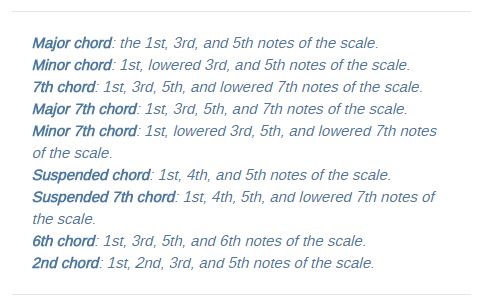
Here’s an example.
You know the key of A has 3 sharps. F#, C#, G#.
So, when you make an A chord, the notes are A C# E. An am chord is A C E. We lowered the C# to a C. An A7 chord is A C# E G. (G# has been lowered to G).
In order to read piano chords, you can continue on doing 1 of 3 things.
1. Memorize individual chords. (Go the chord charts then).
2. Learn about key signatures so that you can learn more about chord theory.
3.
Understand the theory behind the chords so that you know how they are made.
I recommend learning the theory behind chords. That way, you don’t always have to refer to a sheet of chords. You can figure out a chord no matter where you are. And it's not too difficult either. I have a page on
chord theory you can check out.
If you really want to be able to play chords well and read piano chords without any problem, take an online course.
We recommend
Power Piano Chords. It will take you through the basics, advance you, and help you to read piano chords completely. And more importantly, it will teach you some great ways to play chords on the piano.
Video playlist of different C chords:
Free Download:
Ultimate Chord Cheat Sheet

Subscribe below and get free access to the (printable) Ultimate Chord Cheat Sheet.
FAQ for Reading Piano Chords
1. What is a piano chord?
1. What is a piano chord?
A piano chord is a set of notes played simultaneously. The most common types of chords are major, minor, seventh, minor seventh and suspended. Each one with its distinct sound and makeup.
2. How can I read piano chords?
2. How can I read piano chords?
Piano chords are usually notated with the root note followed by the type of chord. For example, C Major is written as C, F# minor as F#m, B flat seventh as Bb7, and D minor seventh as Dm7 and E suspended as E4 / Esus / Esus4.
3. What does the letter in a chord symbol represent?
3. What does the letter in a chord symbol represent?
The letter in a chord symbol represents the root note of the chord. This is the note that the chord is built upon and gives the chord its name. It can include a sharp or a flat.
4. What does it mean if there's an 'm' after the letter in a chord symbol?
4. What does it mean if there's an 'm' after the letter in a chord symbol?
If there's an 'm' after the letter in a chord symbol, it stands for 'minor'. This indicates that the chord is a minor chord. For example, 'Am' stands for A minor.
5. What do the symbols like '#' and 'b' in chord names mean?
5. What do the symbols like '#' and 'b' in chord names mean?
The '#' symbol in a chord name stands for 'sharp', which means the note is a half step higher than the natural note. The 'b' symbol stands for 'flat', which means the note is a half step lower than the natural note. For example, 'C#' means C sharp and 'Bb' means B flat.
6. What are inversions in piano chords?
6. What are inversions in piano chords?
Inversions are variations of a chord where the notes are rearranged so that a note other than the root is the lowest note. For example, the first inversion of a C Major chord (C-E-G) would be E-G-C, with E as the lowest note.
7. How can I improve my chord-reading skills?
7. How can I improve my chord-reading skills?
You can improve your chord-reading skills by practicing regularly, learning and understanding chord theory, and applying your knowledge to real music.
8. What does 'add', 'sus', or 'dim' mean in chord names?
8. What does 'add', 'sus', or 'dim' mean in chord names?
'Add' in a chord name indicates that an additional note is added to the chord, like 'Cadd9' which means a C Major chord with an added 9th (D). 'Sus' stands for 'suspended', and 'sus2' or 'sus4' means the third of the chord is replaced by a 2nd or a 4th. 'Dim' stands for 'diminished', which indicates the chord is a diminished chord.
Return from Read Piano Chords to Piano Lessons Info Homepage.
Free Download:
The Ultimate Chord Cheat Sheet
Enter your email address below and you'll get access to the Ultimate Chord Cheat Sheet.
Chords are listed both by letter name and by key.
- Home
- Reading Chords

